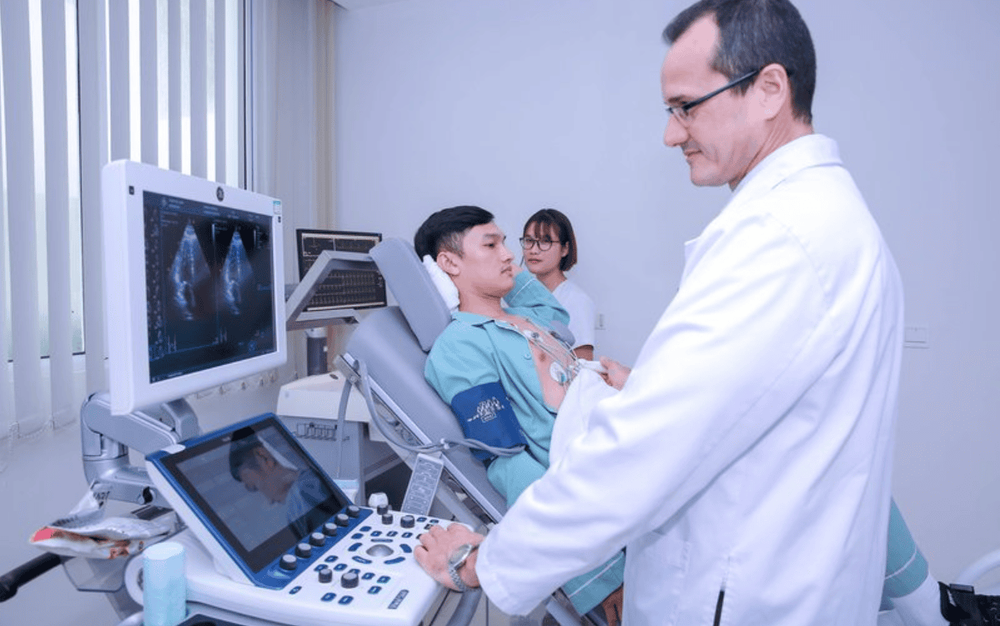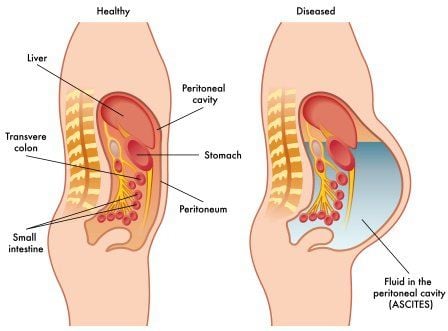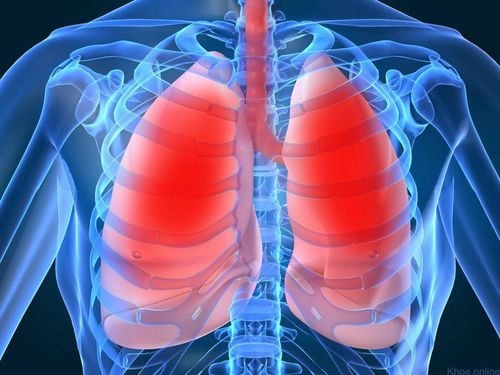This is an automatically translated article.
The article was consulted with Dr. Nguyen Luong Tan - Head of Cardiology Department - Cardiovascular Center - Vinmec Central Park International General Hospital.Pericardial tumor is a rare disease that can be malignant (such as cancer) or benign, if it begins to appear in the center, it is called a primary tumor, if it occurs in other parts of the body and move to the heart (metastasize) is called a secondary tumor. Most cardiac tumors are benign, but in some cases surgical removal of the pericardial tumor is indicated for the best treatment outcome.
1. What is a pericardial tumor?
Pericardial tumor is a pericardial disease in which the cysts are dermoid cysts, belonging to the group of benign heterogeneous embryonic tumors or fibroids, benign connective tumors. The superior or inferior anterior mediastinum is the most common tumor site.
Manifestations of pericardial tumors are often unclear and most are discovered incidentally through chest X-ray for physical examination. In some cases, patients have a dry cough, mediastinal compression, and pleural effusion. Diagnosis of weak pericardial tumor through CT scanner, MRI and echocardiography.

Siêu âm tim chẩn đoán u màng tim
2. When is pericardial surgery performed?
Indication for surgery to remove pericardial tumor is absolute in all cases where the patient has been diagnosed. Surgery can be open surgery or laparoscopic surgery, in which laparoscopic surgery is a modern technique that is gradually being applied more and more in medical facilities with conditions because of its advantages compared to classical surgery. .
In addition, the relative contraindications to pericardectomy are:
Older adults (over 80 years of age) who cannot tolerate surgery People with multiple underlying medical conditions that pose a high risk for surgery Contraindications Other indications in surgery such as problems with coagulation dysfunction, fever patients, etc.
3. Steps to perform pericardial surgery
Step 1: Prepare
Surgeon: is a specialist in thoracic and vascular surgery with anesthesiologists. The patient: was thoroughly explained the purpose of the surgery and the risks, was cleaned and underwent a comprehensive clinical and paraclinical examination. Instruments: equipment for the requirements of thoracic and vascular surgery such as ventilator, continuous negative pressure system, Monitor for hemodynamic monitoring and vital signs, electrocardiogram, oxygen saturation. Step 2: Anesthesia resuscitation
The patient is anesthetized, can use a single-lumen endotracheal tube or a Carlens tube to collapse one lung when necessary. Place central venous lines for timely resuscitation and central venous pressure monitoring.

Gây mê nội khí quản trước khi tiến hành phẫu thuật cắt u màng tim
Step 3: Surgical principles
The patient lies on the side 45° to the opposite side, the pillow is under the contralateral shoulder, the lateral arm is suspended. Use an anterolateral thoracotomy into the 4-5 or 5-6 intercostal space. Evaluation of lesions related to surrounding anatomical components such as pericardium, phrenic nerve, pulmonary adhesions and chest wall. Dissecting the tumor close to the shell, in case the tumor is large, it is possible to cut a part of the pericardium attached to the tumor, with maximum respect for the components of the mediastinal anatomy, especially the phrenic nerve. When pericardial cysts are large, adherent or, if necessary, endoscopic resection of the cyst tip can be performed to release pleural fluid. When closing the chest, it is necessary to check that the lungs are well enlarged, the ribs are closed, the muscle fascia is closed, and the skin is closed. Drainage was aspirated immediately with pressure – 20 cmH2O. Step 4: Post-operative monitoring and management of complications
Patients need to be closely monitored for vital signs and continuous oxygen saturation through Monitor. If there is bleeding and when red blood through the drain is more than 200 ml/h in the first 3 hours, repeat surgery is needed to stop the bleeding. Chest X-ray is done to check after 24 hours. Withdrawal of drainage when there are no more air bubbles, no more fluid comes out. Patients are examined periodically after 6-12 months. Patients with atelectasis, pneumonia after surgery can be caused by causes such as sputum obstruction, pain leading to asphyxiation. Deep breathing requires early breathing stimulation, cough stimulation, vibration, high-dose antibiotics and expectorants. Bronchoscopy when still no results Pleural effusion, pericardium should be aspirated with fine needles or drained when necessary Prevent wound infection by changing dressings twice daily. Some compressive or malignant pericardial tumors can be invasive and metastatic, so patients should be examined early for diagnosis. Vinmec has enough equipment and human resources to determine diagnostic imaging, pathology and surgical resection.
Please dial HOTLINE for more information or register for an appointment HERE. Download MyVinmec app to make appointments faster and to manage your bookings easily.













